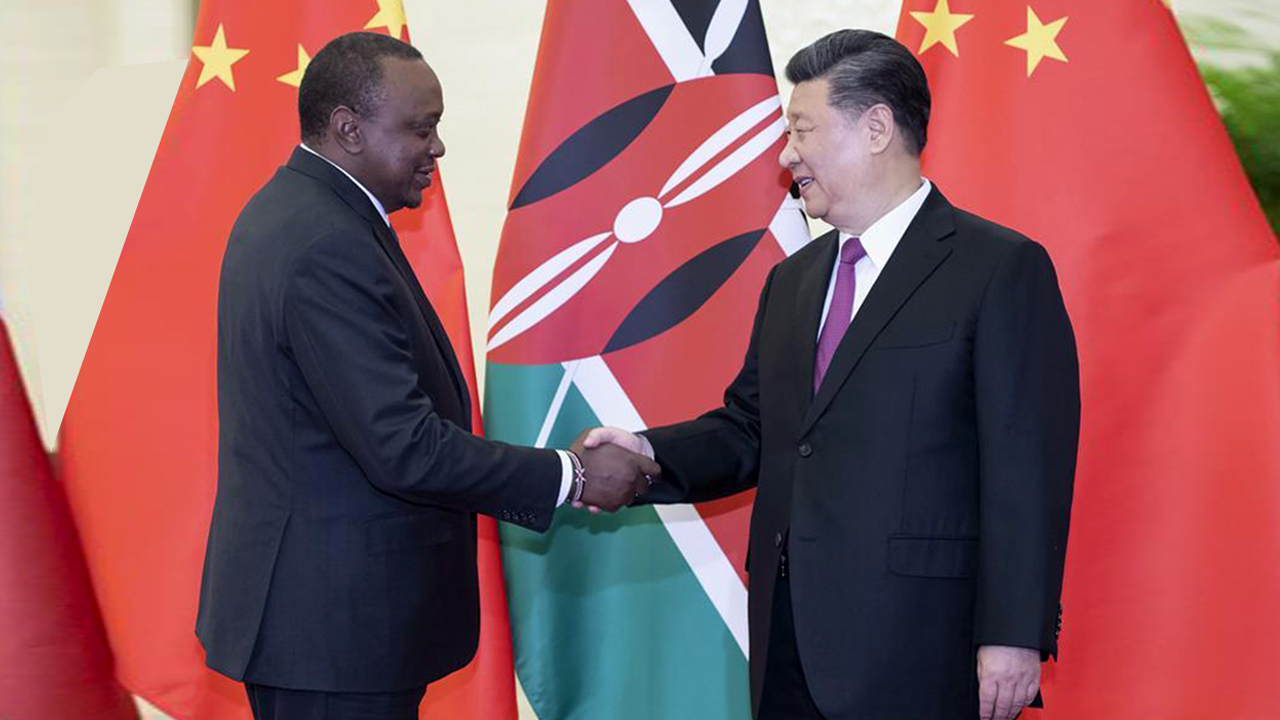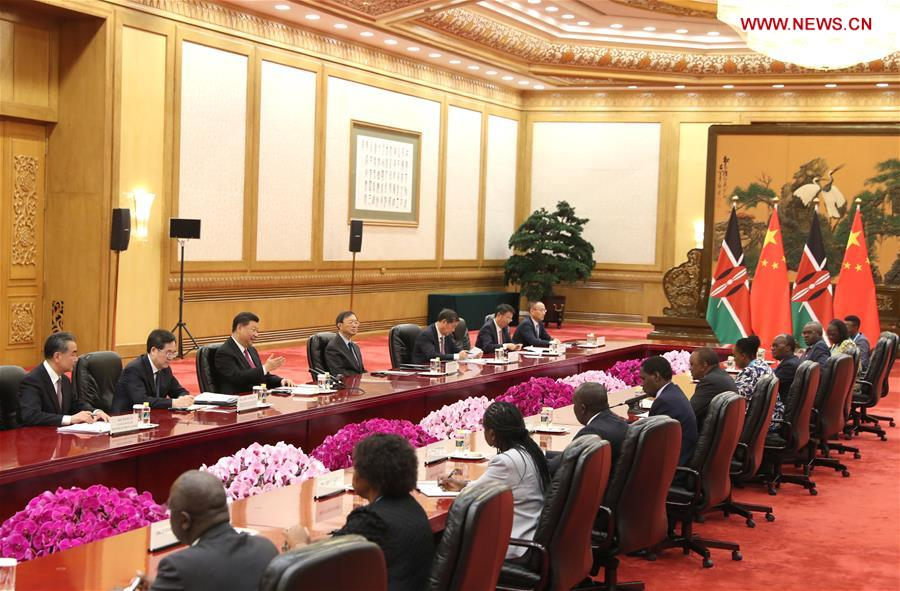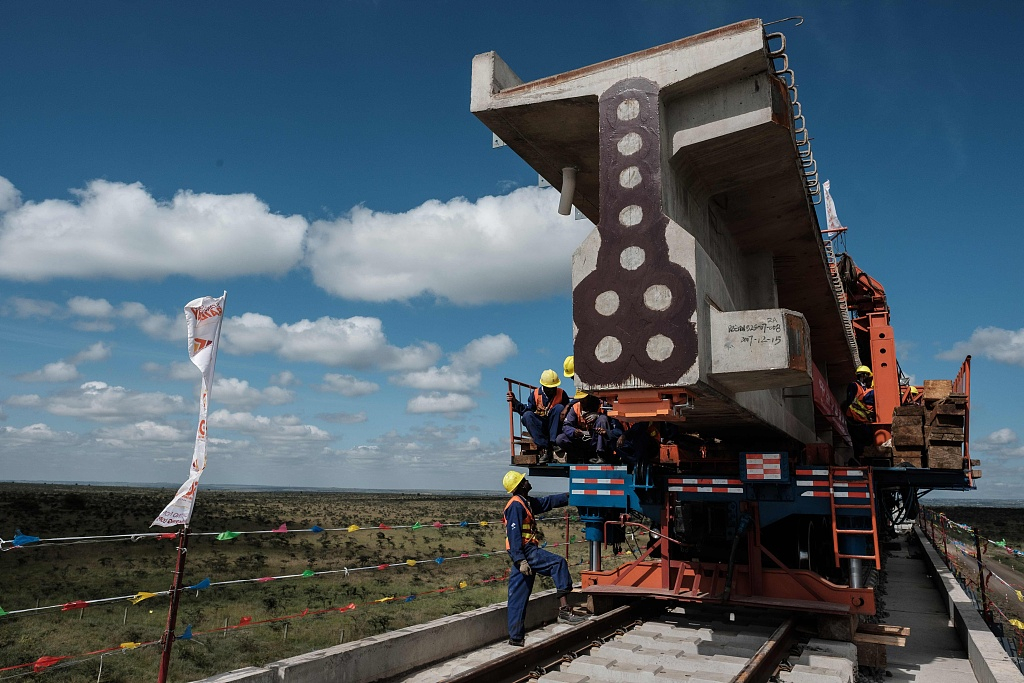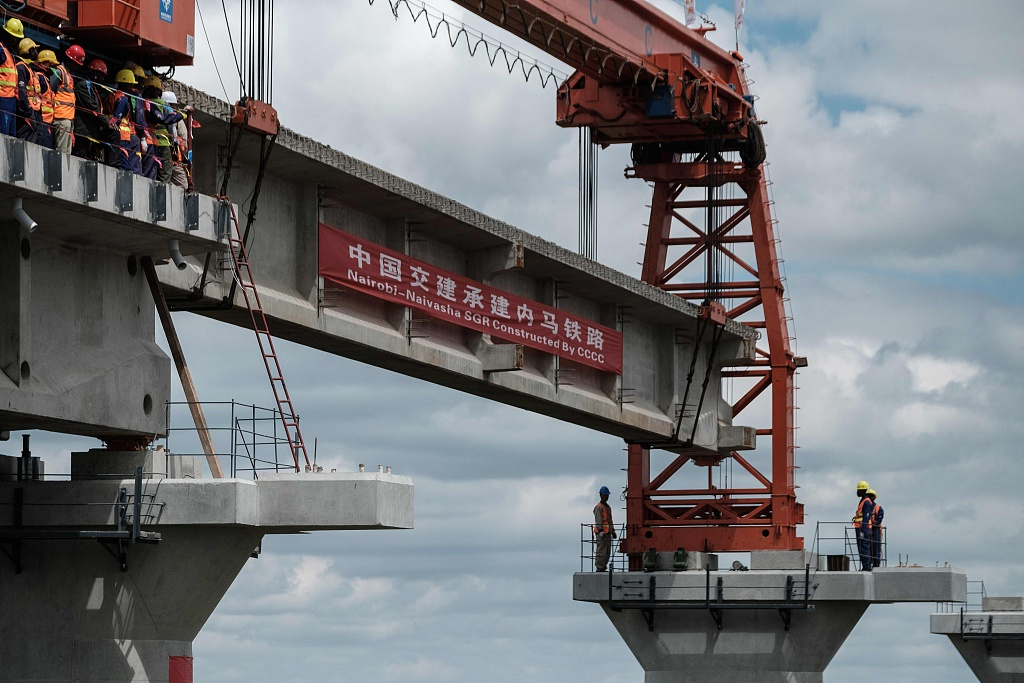
Opinion
22:09, 27-Apr-2019
Unfolding BRI partnership between Kenya and China
Stephen Ndegwa

Editor's note: Stephen Ndegwa is a communication specialist, writer and analyst on China-Africa affairs. The article reflects the author's opinion, and not necessarily the views of CGTN.
The second Belt and Road Forum (BRF) for International Cooperation has just been held in Beijing, to international acclaim. In addition to strengthening the steadily growing trade and diplomatic ties between China and Kenya, Kenya's President Uhuru Kenyatta arrived home with good news.
Preferentially, Kenya has become the first African country to get approval for the export of the highly nutritious Hass avocados to China.
In addition, the two countries signed 226 billion Kenyan shilling deals for the Konza Data Center and Smart Cities Project by Huawei, and the debt-free Jomo Kenyatta International Airport – James Gichuru Expressway in Nairobi. The latter is a Public-Private Partnership project.
These ventures were agreed on, even as Kenya failed to get an extra 368 billion Kenyan shilling to extend the Standard Gauge Railway from the Rift Valley resort town of Naivasha to the Western lakeside town of Kisumu.
However, economic experts in Kenya believe this new development is simply a stop-gap measure aiming to ensure the crucial Belt and Road Initiative (BRI) project is sustainable going forward.

Chinese President Xi Jinping meets with Kenyan President Uhuru Kenyatta, who is here to attend the Second Belt and Road Forum for International Cooperation, at the Great Hall of the People in Beijing, April 25, 2019. /Xinhua Photo
Chinese President Xi Jinping meets with Kenyan President Uhuru Kenyatta, who is here to attend the Second Belt and Road Forum for International Cooperation, at the Great Hall of the People in Beijing, April 25, 2019. /Xinhua Photo
Indeed, it is now evident that China is not preying on the resources of its developing partners in order to push them into a debt trap, and subsequently attach their national assets. It is expected that construction of the SGR will continue at an opportune moment.
In the next century, Kenya will have written history twice on its pivotal role in establishing the BRI in the region, and Africa as a whole. The BRI is not an entirely new concept, as its critics would have us believe.
More than 2000 years ago, Julius Caesar of ancient Rome loved wearing robes made of Chinese silk. The silk products were transported from China through an ancient trade route that linked Asia and Europe. It was later known as the Silk Road.
According to historical records at the National Museums of Kenya (NMK), a Chinese fleet of ships, quite enormous for their time, under the command of navigator Cheng Ho, a Muslim from Yunnan, made seven great voyages across the Indian Ocean between 1405 and 1433.
The Kenyan and Chinese team working on an archaeological project in Mambrui, Malindi are expected to unravel the date of East African Coast trade with the East. Kenya has an important bond linking China and Africa since ancient times.
Today, players from China and Kenya, together with merchants from Asia, Africa and Europe, have re-opened the latter-day "Maritime Silk Road."

A railway track at the construction site of Standard Gauge Railway (SGR) during the Presidential Inspection of the SGR Nairobi-Naivasha Phase 2A project in Nairobi, Kenya, June 23, 2018. /VCG Photo
A railway track at the construction site of Standard Gauge Railway (SGR) during the Presidential Inspection of the SGR Nairobi-Naivasha Phase 2A project in Nairobi, Kenya, June 23, 2018. /VCG Photo
Over the past five years, BRI has transformed from a vision to practical actions with visible outcomes. China has already signed 103 agreements with 88 countries and international organizations. China has established 113 overseas economic and trade cooperation zones.
The trade and investment between China and the countries along the Belt and Road have been growing rapidly, with the total trading volume surpassing seven trillion U.S. dollars, and the investment volume totaling more than 60 billion U.S. dollars.
Under the BRI framework, Kenya is constructing the Standard Gauge Railway (SGR), the country's biggest project since independence. The first phase of the SGR, comprising 472 km from the idyllic coastal city of Mombasa to the capital city, Nairobi, was launched two years ago ahead of schedule
SGR has shortened the trip between the two cities from ten to five hours. It has increased Kenya's gross domestic product by 1.5 percent and created 46,000 jobs for local residents.
Since it was launched on May 31, 2017, the Madaraka Express passenger numbers have hit the two million mark. The trains have hauled 112,000 Twenty Foot Equivalent Units (TEUs), which has lowered down the freight cost by 79 percent, and the cost of doing business by 40 percent.
Though unwritten, the ideals of the ancient Silk Road are the same ones espoused by BRI. Among other ideas, the Initiative aims at promoting economic growth among participating countries through infrastructure connectivity, trade, investment and industrial cooperation.

The track laying machine at the construction site of Standard Gauge Railway (SGR) during the Presidential Inspection of the SGR Nairobi-Naivasha Phase 2A project in Nairobi, Kenya, June 23, 2018. /VCG Photo
The track laying machine at the construction site of Standard Gauge Railway (SGR) during the Presidential Inspection of the SGR Nairobi-Naivasha Phase 2A project in Nairobi, Kenya, June 23, 2018. /VCG Photo
During the just concluded BRF, Presidents Kenyatta and his China counterpart Xi Jinping held bilateral talks in Beijing. Kenyatta reaffirmed his commitment to the ideals of the BRI, saying that Kenya was ready to act as a launch pad for BRI in both Central and West Africa.
The ongoing BRI buy-in by an increasing number of countries is a reflection of their common aspirations in achieving prosperity and development. BRI also meets the need for countries to tackle their unique challenges.
Kenya is among 26 countries who have jointly formulated the Guiding Principles on Financing the Development of the Belt and Road. These Principles advocate a transparent, friendly, non-discriminatory and predictable financing environment that ensures sustainable economic and social development.
As noted earlier on the suspension of the extension of the SGR loan to Kenya, debt sustainability is also taken into account when mobilizing finance for BRI related projects. While giving countries the freedom to choose their best finance and investment options, the BRI principles guard against the negative impact of cooperation efforts.
(Top image: Chinese President Xi Jinping (R) meets with Kenyan President Uhuru Kenyatta, who is here to attend the Second Belt and Road Forum for International Cooperation, at the Great Hall of the People in Beijing, capital of China, April 25, 2019. /Xinhua Photo)
(If you want to contribute and have specific expertise, please contact us at opinions@cgtn.com.)

SITEMAP
Copyright © 2018 CGTN. Beijing ICP prepared NO.16065310-3
Copyright © 2018 CGTN. Beijing ICP prepared NO.16065310-3